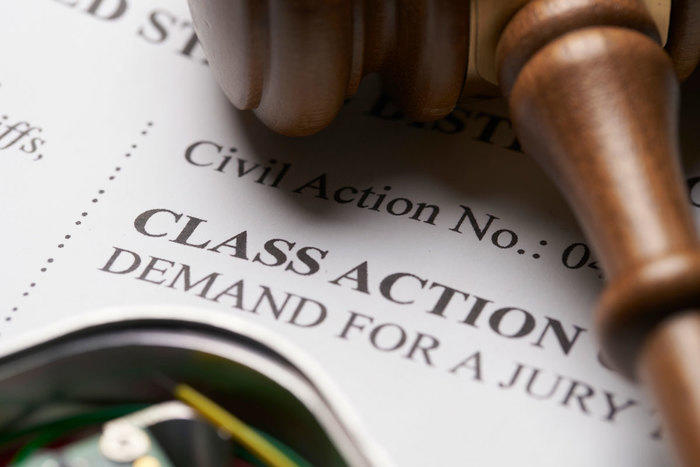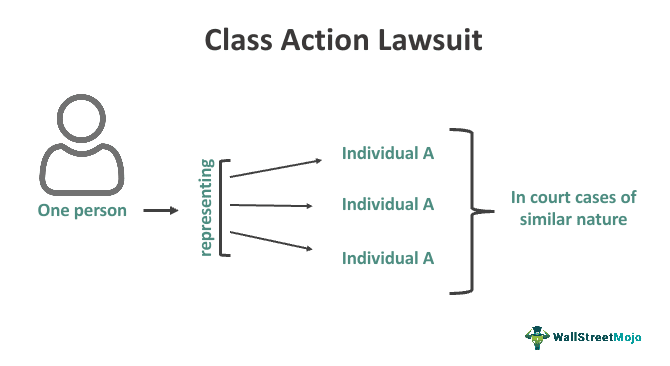Your Rights, Your Voice: The Basics of Pursuing a Class Action Lawsuit
Wiki Article
Understanding Course Action Lawsuit: An Overview for Lawyers
Course action legal actions have become an indispensable part of the lawful landscape, allowing for the debt consolidation of several claims into a single action. By diving into the details of class activity legal actions, this overview equips attorneys with the expertise and tools needed to efficiently navigate this complex location of regulation.The Fundamentals of Class Action Suits
Class activity lawsuits are a legal device employed to combine comparable cases from a team of individuals into a single lawsuit, offering a economical and efficient strategy to looking for justice and resolution. This kind of legal action allows a depictive plaintiff, acting on part of the entire course, to bring a claim versus an accused who has actually presumably caused injury or broke the rights of several individuals.The standard requirements for bringing a class action legal action consist of numerosity, commonness, typicality, and adequacy of depiction. Numerosity refers to the truth that the class should be so big that joinder of all participants would certainly be unwise. Commonness indicates that there have to be usual concerns of regulation or fact that are shared by all members of the course. Typicality needs that the cases of the depictive plaintiff are common of the insurance claims of the whole course. Adequacy of representation makes sure that the representative complainant will effectively represent the passions of the whole course.
Class action claims can be beneficial for both plaintiffs and defendants. For defendants, it supplies the opportunity to effectively resolve several cases in a single claim, avoiding the requirement to protect versus numerous private suits.
Identifying and Assessing Possible Class Members
After establishing the standard needs for a class action claim, the following action is to identify and evaluate prospective course participants. This process includes identifying who may become part of the course and evaluating their insurance claims to figure out if they fulfill the essential criteria.To determine prospective class members, attorneys commonly perform extensive research and collect pertinent details. This might entail examining papers, performing meetings, and taking a look at records to determine individuals or entities that may have been affected by the claimed misbehavior. It is critical to develop a detailed and clear checklist of potential class participants to ensure that all affected events are consisted of in the suit.
As soon as prospective class participants have been recognized, the following step is to analyze their insurance claims. If they fulfill the legal needs for class qualification, this includes reviewing the advantages of each individual insurance claim to determine. Attorneys must very carefully analyze the truths, proof, and legal concepts of each potential course member's case to guarantee that they have a sensible case.
Analyzing potential class participants additionally includes establishing whether they meet the class interpretation and have actually suffered similar injury as an outcome of the defendant's actions. This calls for contrasting the facts and scenarios of each possible course member's situation to the accusations and lawful concepts presented in the suit.
Browsing the Course Qualification Process
To successfully navigate the class qualification procedure, lawyers should vigilantly adhere to the procedural requirements set forth by the court. Class accreditation is a critical step in a class action suit, as it establishes whether an instance can proceed as a class action, representing a group of individuals who have similar insurance claims against an accused. The process includes satisfying particular requirements, such as numerosity, commonality, typicality, and adequacy of representation.Firstly, lawyers should establish numerosity by demonstrating that the course is so huge that specific joinder is not practical. This can be attained with evidence or expert testimony. Second of all, they have to develop commonness by showing that there are common questions of regulation or reality that predominate over private issues. This calls for a thorough evaluation of the insurance claims and defenses entailed.
Following, attorneys must reveal typicality, which implies that the depictive complainant's claims are typical of the insurance claims of the class participants. This makes sure that the interests of the depictive complainant align with the interests of the course. Legal representatives should show competence of representation, suggesting that the representative plaintiff and their advise will fairly and effectively represent the rate of interests of the course.
To browse this process successfully, legal representatives should completely prepare by performing substantial research study, collecting proof, and developing a compelling debate that pleases each of these criteria. They need to also be prepared to reply to any arguments or obstacles raised by the defendant. By carefully sticking to the step-by-step needs set forth by the court, lawyers can enhance their possibilities of getting course qualification and progressing the interests of the class members.

Key Methods for Managing Class Activity Litigation
Upon effectively browsing the class accreditation procedure, lawyers should after that implement crucial approaches for successfully managing class activity lawsuits. These techniques are vital to ensure that the instance proceeds efficiently and efficiently, ultimately optimizing the possibilities of a positive result for the class members.
One key strategy is to establish a solid and cohesive legal group (Class action lawsuit). This includes assembling a team of attorneys with proficiency in course action lawsuits, in addition to various other their explanation pertinent areas such as the particular market or subject issue associated with the case. A well-rounded team can bring various viewpoints and skills to the table, enhancing the total performance of the lawsuits
An additional essential method is to develop a well-balanced and detailed litigation plan. This plan must outline the overall purposes of the case, in addition to the particular lawful theories and debates that will be sought. It ought to likewise include a timeline and Homepage budget to guarantee that the situation remains on track and within the assigned resources.
Furthermore, lawyers must actively engage with the course participants throughout the lawsuits process (Class action lawsuit). This consists of supplying routine updates on the progress of the situation, seeking input and feedback from the course participants, and resolving any type of problems or concerns they might have. By promoting open interaction and partnership, attorneys can construct count on and support amongst the course participants, which can be important in achieving a successful resolution
Working Out Class Activity Lawsuits: Arrangement and Approval
When it comes to clearing up course activity lawsuits, efficient arrangement and acquiring authorization are necessary action in achieving a resolution. Class action lawsuits are complex and entail a a great deal of complainants, making it critical to reach a settlement that is fair and satisfying to all parties involved.
As soon as a negotiation contract is reached, it needs to be authorized by the court. The court's duty in this process is to make sure that the negotiation is fair, affordable, and sufficiently secures the passions of the class participants. The court will think about factors such as the nature of the cases, the strength of the proof, the possible recuperation see page for the course participants, and any kind of arguments elevated by course participants.
Obtaining court authorization is essential as it gives finality to the negotiation and secures the rate of interests of the course participants. It makes certain that the settlement is binding and enforceable, and course members can get their rightful compensation.
Verdict
Class activity claims have become an integral part of the legal landscape, allowing for the loan consolidation of numerous claims into a solitary action. Class accreditation is a crucial action in a class activity suit, as it figures out whether a situation can continue as a class action, standing for a group of people that have similar claims against an accused. By vigilantly sticking to the procedural requirements set forth by the court, legal representatives can increase their chances of acquiring class accreditation and advancing the interests of the class members.
The court will consider elements such as the nature of the insurance claims, the stamina of the evidence, the prospective recovery for the course participants, and any type of objections elevated by course members.
By identifying and assessing potential class members, legal representatives can determine the stability of a course activity suit.
Report this wiki page